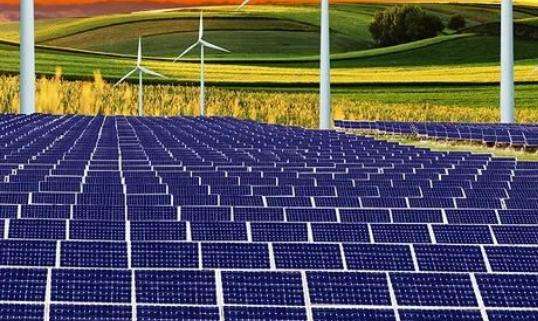This can be regarded as the smallest wind turbine in the world. The diameter of the fan is only 2.8cm~6cm, and it can automatically adjust the wind direction.
Generator size 1.3 x 1.4 x 1.7 cm , generates 2.5~2.8V 70mA. Can load 3~6 ultra-bright LED lights.
Here is a little common sense about making a homemade wind turbine:
Many people want to make wind power People who generate electricity almost don’t know that they need to find a wind farm in advance. Finding a wind farm cannot be based on guesswork. It must be judged by an anemometer, otherwise the wind turbine cannot be installed. Many rotating wind turbines are in a virtual state. "turning state", no electricity is generated at all, because most wind turbines do not start generating electricity until the wind speed reaches 3.5 to 4 meters per second. A small 400-watt wind turbine seems to be spinning loudly. If the wind speed is used to measure If the wind speed does not reach 4 meters per second, the power generation capacity is "zero". Even if the wind speed reaches 4 meters per second, the power generation capacity is only 0.5 watts. The wind speed must reach more than 8 meters per second. A leaf has to be blown 8 meters in one second) in order for its power generation to meet the "400 watts" power generation indicated on the manual. Therefore, many laymen do not first use an anemometer to find a suitable wind field, and in the end they just do I just made a "Landscape Windmill".
How to calculate the equivalent hours?
I work in the wind power industry. Whether it is wind power generation or thermal power generation, there is no electricity storage. Capacity, if any, is for special industries, because the cost of electricity storage is much higher than the cost of power generation, and there is almost no electricity storage capacity on the entire power grid. You have to understand the word "power grid" here clearly. All power plants are on a large network. On the one hand, they receive electricity and on the other hand, they output power. All power plants (coal power, wind power, hydropower) are on As for the power grid that absorbs electricity, the grid can adjust the balance between storage and output. It generally adjusts the amount of electricity it receives based on the output power. In other words, the amount of electricity you send out depends on how much electricity you can use.
Wind power equipment does not have batteries. If the power received in the entire power grid is less than the output power, the power generated by the wind farm will be connected to the grid. At this time, the electricity generated by the wind farm is valuable. When the demand is low, the electricity from the wind farm is disconnected from the grid. The wind power equipment can be allowed to idle, or the wind power equipment can be braked not to rotate and not generate electricity.
It is difficult to solve the problem of connecting wind power equipment to the grid now, because the electricity it generates is not very stable and has a great impact on the power grid. For example, if wind power equipment is being connected to the grid to generate electricity, suddenly the wind in the sky increases. Large, the wind power equipment has not yet been able to adjust its power generation. At this time, the wind speed increases, the generator speed increases, the power surges, and the voltage rises, which is an impact on the power grid, just like when you use light bulbs at home, the voltage is high. It is very bright when it is low, and it is very dark when it is low. This is the situation when you use 220V household electricity. If the effect on the power grid is better than the effect of your home light bulbMuch bigger.
The best wind power equipment now comes from Europe. Vestas from Scandinavia and Denmark is the best wind power equipment, with the strongest grid-connection capabilities and the most practical value. Domestic wind turbines really don’t dare to Compliment. Wind farms built with domestically produced wind turbines are almost just decorations. It doesn't work!
The accurate calculation of equivalent hours is: the number of operating hours calculated by dividing the power generation amount during the reporting period by the capacity of the power generation equipment. Equivalent hours are an important indicator to measure the power generation performance of a project. Simply put, it is the ratio of annual power generation to capacity. For a single unit, it is the ratio of the annual power generation of the single unit to the unit capacity; and for a wind farm, it is the ratio of the annual power generation of the entire site to the entire installed capacity.














